Crosstalk Analysis of a CMOS Single Membrane Thermopile Detector Array
Abstract
1. Introduction
2. Device Fabrication
3. Experimental Results
4. Numerical Simulations
5. Conclusions
Author Contributions
Funding
Conflicts of Interest
References
- Kimata, M. Uncooled infrared focal plane arrays. IEEJ Trans. Electr. Electron. Eng. 2017, 13. [Google Scholar] [CrossRef]
- Rogalski, A. Progress in focal plane array technologies. Prog. Quantum Electron. 2012, 36, 342–473. [Google Scholar] [CrossRef]
- Popa, D.; Udrea, F. Towards Integrated Mid-Infrared Gas Sensors. Sensors 2019, 19, 2076. [Google Scholar] [CrossRef] [PubMed]
- Kruse, P. Uncooled Thermal Imaging: Arrays, Systems, and Applications; SPIE Tutorial Texts, SPIE Press: Bellingham, WA, USA, 2011. [Google Scholar]
- Kimata, M. Trends in small-format infrared array sensors. In Proceedings of the 2013 IEEE SENSORS, Baltimore, MD, USA, 3–6 November 2013; pp. 1–4. [Google Scholar] [CrossRef]
- Schaufelbuhl, A.; Schneeberger, N.; Munch, U.; Waelti, M.; Paul, O.; Brand, O.; Baltes, H.; Menolfi, C.; Huang, Q.; Doering, E.; et al. Uncooled low-cost thermal imager based on micromachined CMOS integrated sensor array. J. Microelectromech. Syst. 2001, 10, 503–510. [Google Scholar] [CrossRef]
- Holden, A.J. Pyroelectric sensor arrays for detection and thermal imaging. In Infrared Technology and Applications XXXIX; Andresen, B.F., Fulop, G.F., Hanson, C.M., Norton, P.R., Robert, P., Eds.; International Society for Optics and Photonics, SPIE: Bellingham, WA, USA, 2013; Volume 8704, pp. 483–492. [Google Scholar] [CrossRef]
- Minoli, D.; Sohraby, K.; Occhiogrosso, B. IoT Considerations, Requirements, and Architectures for Smart Buildings—Energy Optimization and Next-Generation Building Management Systems. IEEE Internet Things J. 2017, 4, 269–283. [Google Scholar] [CrossRef]
- Meijer, G.C.M.; Makinwa, K.A.A.; Pertijs, M.A.P. Smart Sensor Systems: Emerging Technologies and Applications; Wiley: Chichester, UK, 2014; 279p. [Google Scholar]
- Liang, Q.; Yu, L.; Zhai, X.; Wan, Z.; Nie, H. Activity Recognition Based on Thermopile Imaging Array Sensor. In Proceedings of the 2018 IEEE International Conference on Electro/Information Technology (EIT), Rochester, MI, USA, 3–5 May 2018; pp. 0770–0773. [Google Scholar]
- John, V.; Mita, S.; Liu, Z.; Qi, B. Pedestrian detection in thermal images using adaptive fuzzy C-means clustering and convolutional neural networks. In Proceedings of the 2015 14th IAPR International Conference on Machine Vision Applications (MVA), Tokyo, Japan, 18–22 May 2015; pp. 246–249. [Google Scholar] [CrossRef]
- Vieider, C.; Wissmar, S.; Ericsson, P.; Halldin, U.; Niklaus, F.; Stemme, G.; Källhammer, J.E.; Pettersson, H.; Eriksson, D.; Jakobsen, H.; et al. Low-cost far infrared bolometer camera for automotive use. In Infrared Technology and Applications XXXIII; Andresen, B.F., Fulop, G.F., Norton, P.R., Eds.; International Society for Optics and Photonics, SPIE: Bellingham, WA, USA, 2007; Volume 6542, pp. 578–587. [Google Scholar] [CrossRef]
- Popa, D.; Ali, S.Z.; Hopper, R.; Dai, Y.; Udrea, F. Smart CMOS mid-infrared sensor array. Opt. Lett. 2019, 44, 4111–4114. [Google Scholar] [CrossRef] [PubMed]
- Hopper, R.; Ali, S.Z.; Boual, S.; Luca, A.D.; Dai, Y.; Popa, D.; Udrea, F. A CMOS-Based Thermopile Array Fabricated on a Single SiO2 Membrane. Proceedings 2018, 2, 878. [Google Scholar] [CrossRef]
- Hirota, M.; Nakajima, Y.; Saito, M.; Satou, F.; Uchiyama, M. 120 × 90 element thermopile array fabricated with CMOS technology. In Infrared Technology and Applications XXVIII; Andresen, B.F., Fulop, G.F., Strojnik, M., Eds.; International Society for Optics and Photonics, SPIE: Bellingham, WA, USA, 2003; Volume 4820, pp. 239–249. [Google Scholar] [CrossRef]
- Rogalski, A. Infrared Detectors; CRC Press: Boca Raton, FL, USA; London, UK; New York, NY, USA, 2010. [Google Scholar]
- Herwaarden, A.V.; Sarro, P. Thermal sensors based on the seebeck effect. Sens. Actuators 1986, 10, 321–346. [Google Scholar] [CrossRef]
- Rogalski, A. Infrared detectors: Status and trends. Prog. Quantum Electron. 2003, 27, 59–210. [Google Scholar] [CrossRef]
- Wu, H.; Grabarnik, S.; Emadi, A.; de Graaf, G.; Wolffenbuttel, R.F. Characterization of thermal cross-talk in a MEMS-based thermopile detector array. J. Micromech. Microeng. 2009, 19, 074022. [Google Scholar] [CrossRef]
- Falco, C.; Udrea, F. On the application of a numerical model to improve the accuracy of the seebeck coefficient in CMOS materials. In Proceedings of the 2017 IEEE SENSORS, Glasgow, UK, 29 October–1 November 2017; pp. 1–3. [Google Scholar] [CrossRef]
- Graf, A.; Arndt, M.; Sauer, M.; Gerlach, G. Review of micromachined thermopiles for infrared detection. Meas. Sci. Technol. 2007, 18, 7. [Google Scholar] [CrossRef]
- Hopper, R.; Ali, S.; Chowdhury, M.; Boual, S.; Luca, A.D.; Gardner, J.; Udrea, F. A CMOS-MEMS Thermopile with an Integrated Temperature Sensing Diode for Mid-IR Thermometry. Procedia Eng. 2014, 87, 1127–1130. [Google Scholar] [CrossRef]
- Hirakawa, K. Cross-talk explained. In Proceedings of the 2008 15th IEEE International Conference on Image Processing, San Diego, CA, USA, 12–15 October 2008; pp. 677–680. [Google Scholar] [CrossRef]
- Agranov, G.; Berezin, V.; Tsai, R.H. Crosstalk and microlens study in a color CMOS image sensor. IEEE Trans. Electron Devices 2003, 50, 4–11. [Google Scholar] [CrossRef]
- Udrea, F.; De Luca, A. CMOS technology platform for ubiquitous microsensors. In Proceedings of the 2017 International Semiconductor Conference (CAS), Sinaia, Romania, 11–14 October 2017; pp. 43–52. [Google Scholar] [CrossRef][Green Version]
- DiSalvo, F.J. Thermoelectric Cooling and Power Generation. Science 1999, 285, 703–706. [Google Scholar] [CrossRef] [PubMed]
- Yushanov, S.P.; Gritter, L.T.; Crompton, J.S.; Koppenhoefer, K.C. Multiphysics analysis of thermoelectric phenomena. In Proceedings of the 2011 COMSOL Conference, Boston, MA, USA, 13–15 October 2011. [Google Scholar]
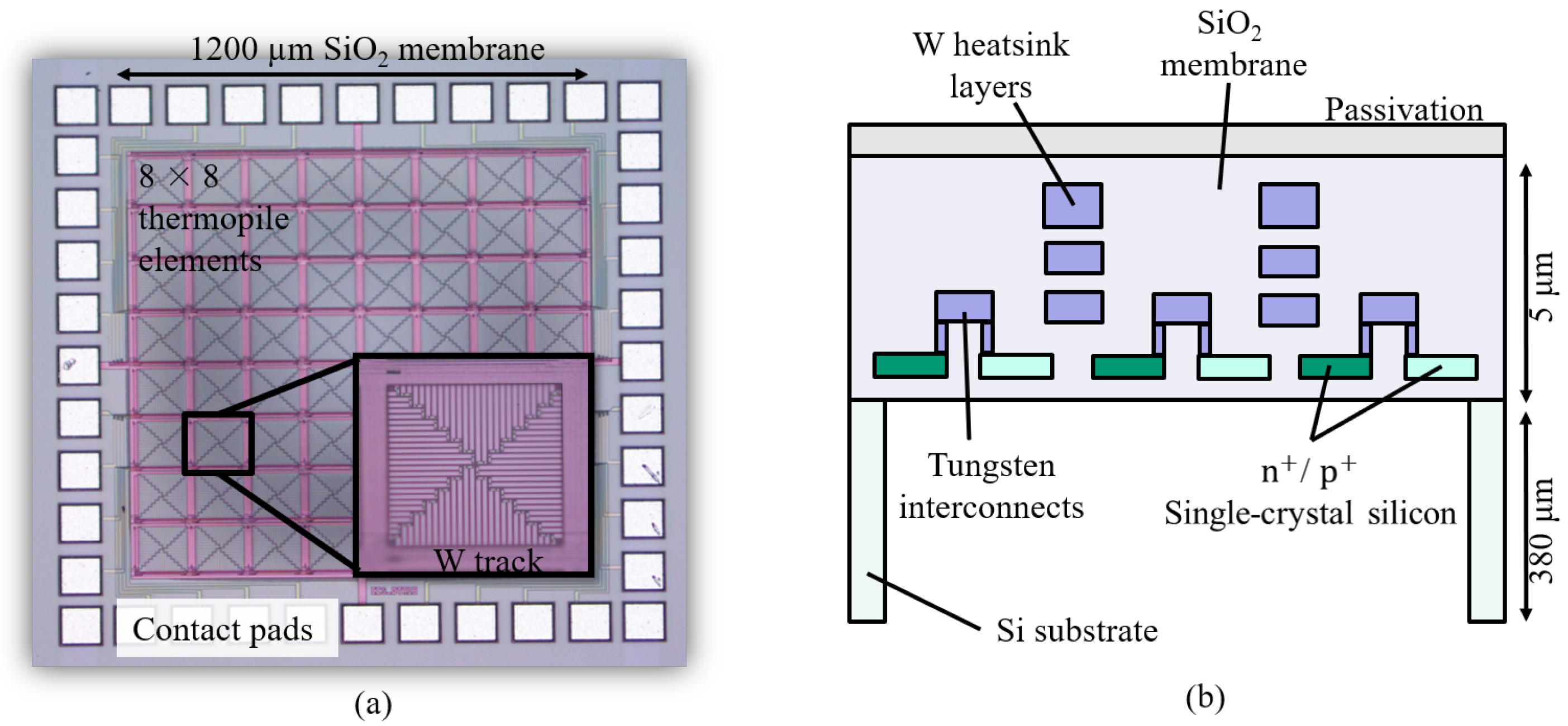
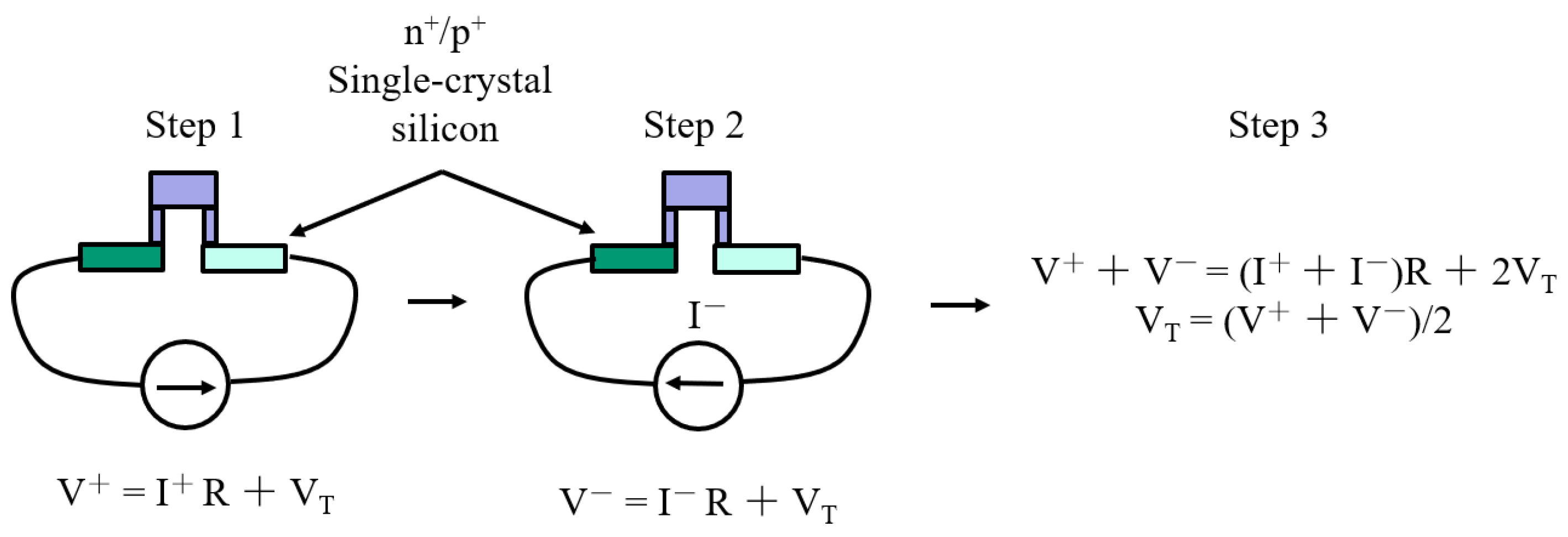

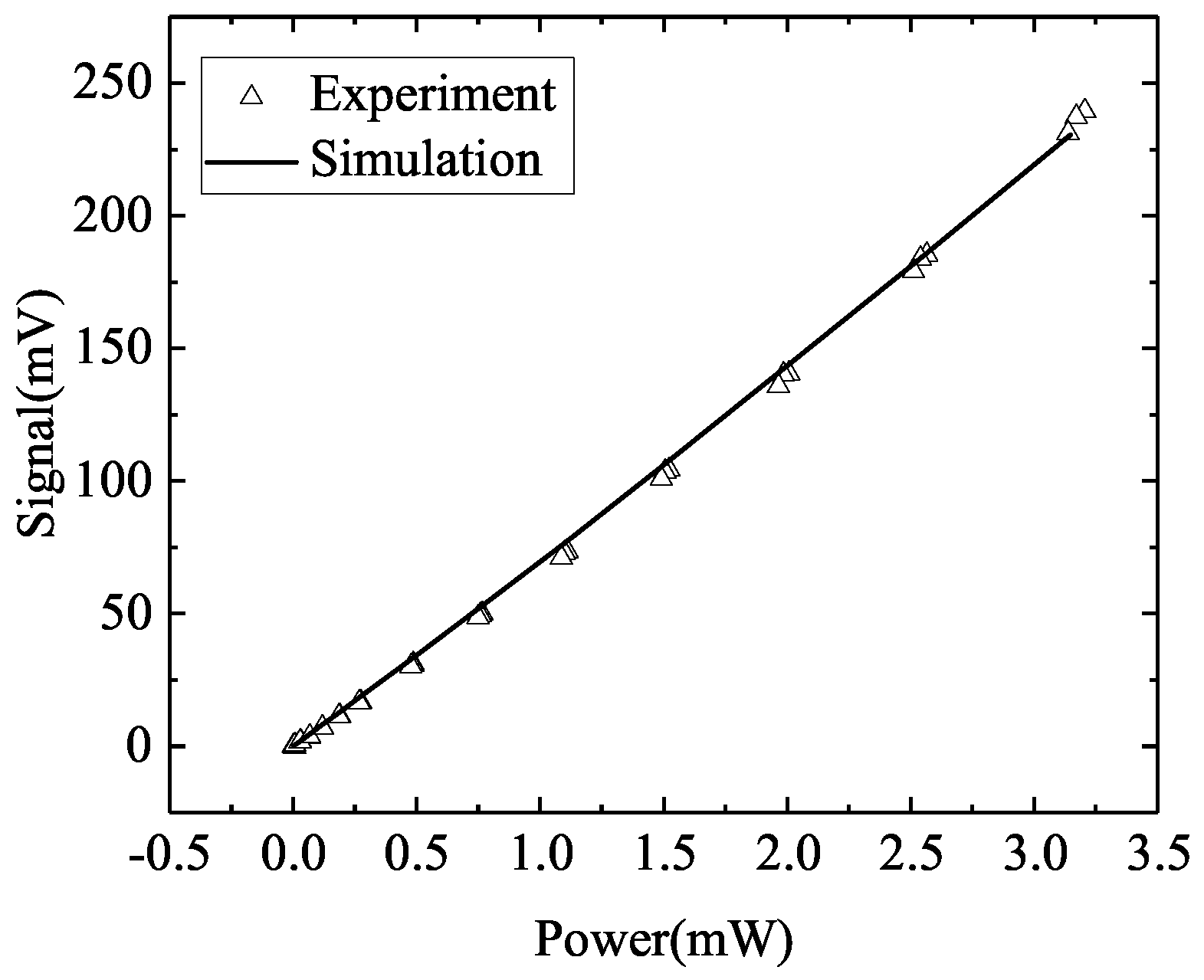
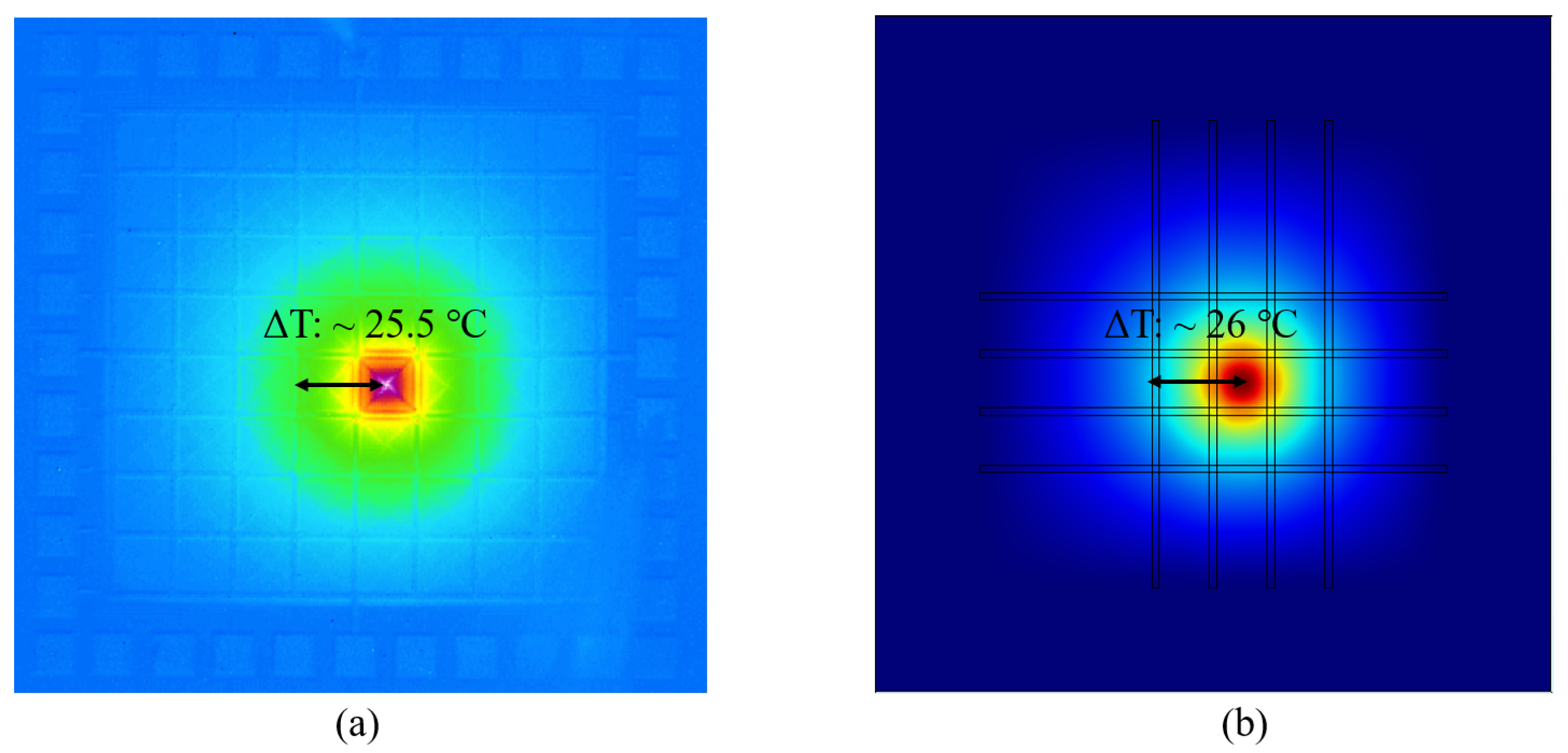
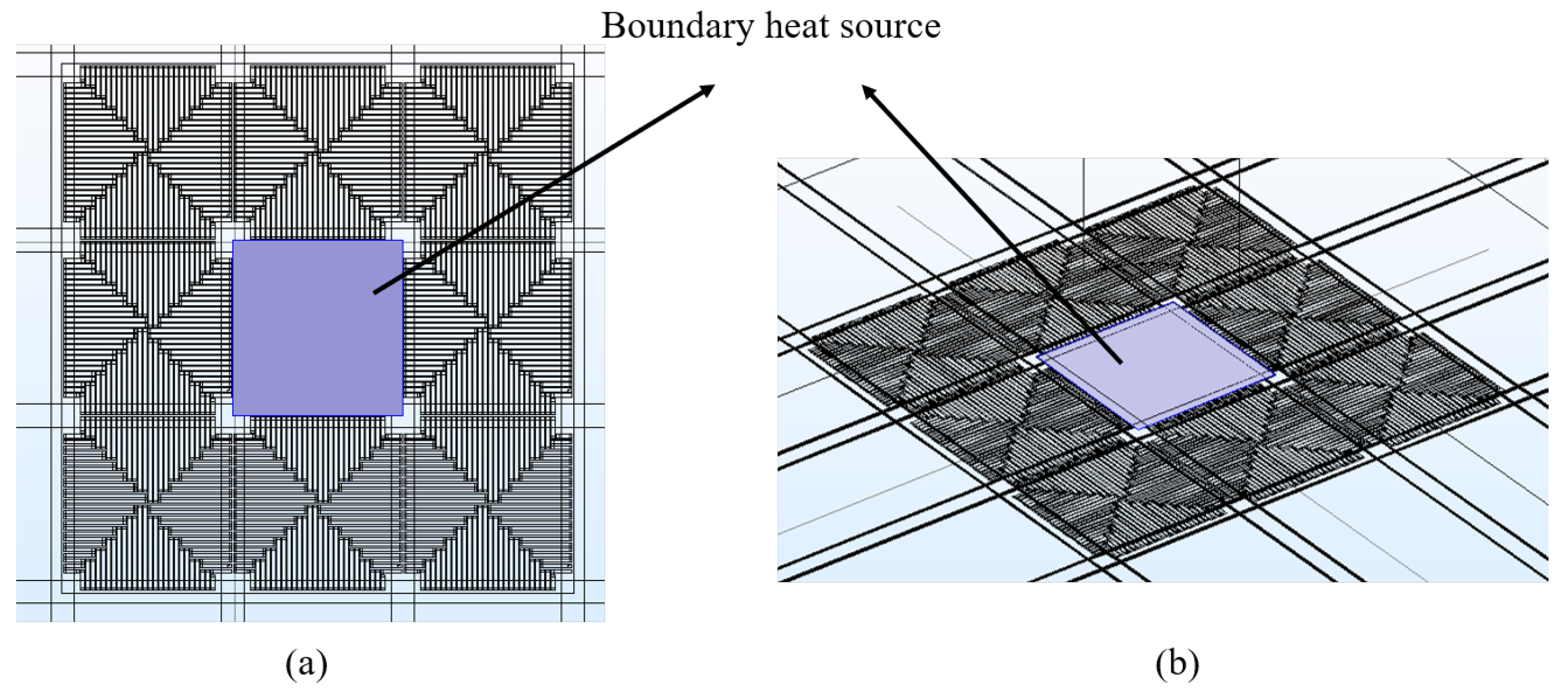
| Results | Pixel Resistance (k) | Crosstalk (%) | Responsivity (V/W) |
|---|---|---|---|
| Measurements with current source | 76.07 | 2.69 | 73.10 |
| Simulations with current source | 76.21 | 2.70 | 72.76 |
| Simulations with uniform power source | 76.21 | 3.02 | 63.05 |
© 2020 by the authors. Licensee MDPI, Basel, Switzerland. This article is an open access article distributed under the terms and conditions of the Creative Commons Attribution (CC BY) license (http://creativecommons.org/licenses/by/4.0/).
Share and Cite
Dai, Y.; Ali, S.Z.; Hopper, R.; Falco, C.; Pandey, P.; Oxley, C.; Popa, D.; Udrea, F. Crosstalk Analysis of a CMOS Single Membrane Thermopile Detector Array. Sensors 2020, 20, 2573. https://doi.org/10.3390/s20092573
Dai Y, Ali SZ, Hopper R, Falco C, Pandey P, Oxley C, Popa D, Udrea F. Crosstalk Analysis of a CMOS Single Membrane Thermopile Detector Array. Sensors. 2020; 20(9):2573. https://doi.org/10.3390/s20092573
Chicago/Turabian StyleDai, Ying, Syed Zeeshan Ali, Richard Hopper, Claudio Falco, Prakash Pandey, Chris Oxley, Daniel Popa, and Florin Udrea. 2020. "Crosstalk Analysis of a CMOS Single Membrane Thermopile Detector Array" Sensors 20, no. 9: 2573. https://doi.org/10.3390/s20092573
APA StyleDai, Y., Ali, S. Z., Hopper, R., Falco, C., Pandey, P., Oxley, C., Popa, D., & Udrea, F. (2020). Crosstalk Analysis of a CMOS Single Membrane Thermopile Detector Array. Sensors, 20(9), 2573. https://doi.org/10.3390/s20092573







